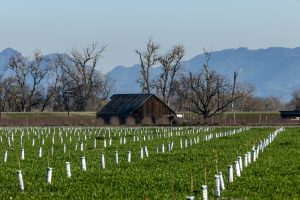By David Guy
State, federal and local water leaders in the Sacramento River Basin came together this week on a broad agreement on long-term measures for healthy rivers, farms and landscapes. See the news release.
With one of the driest years among a decade with two series of consecutive dry years, we have an opportunity to advance a transformational new approach to water management in the Delta and our rivers. Through a process generally known as voluntary agreements, we have a new governance structure for water management that will emerge with a collaborative and innovative spirit to work hard for healthy rivers, farms, and landscapes–all working together for the benefit of our people, communities, fish and wildlife.
For the past 50 years (since D-1379 in 1971) there has been a similar approach to improve the Water Quality Control Plan for the Bay-Delta. The voluntary agreements offer a different, modern, and more comprehensive approach that will expand the toolbox for the Bay-Delta, while signing up the leading water resources managers in California to work together with fish and wildlife agencies and conservation partners to implement the actions in this toolbox in a way that has never been seen. This approach does not presuppose all the answers to the Bay-Delta. To the contrary, the approach puts in motion the water resources managers bringing their agencies and skills to an implementation program where parties learn together, use contemporary science, and make this program as robust as possible to improve conditions for fish and wildlife while ensuring water for cities, rural communities and farms.




This new approach empowers ridgetop to river mouth water management, with water resources managers advancing headwaters and forest health management; floodplain reactivation for public safety and fish and wildlife; improve conditions for spawning, rearing and out-migrating salmon; sustainable groundwater management (including groundwater recharge and banking); and Sites Reservoir. The managers will integrate and coordinate the operations of the rivers in the Bay-Delta watershed to provide maximum benefits to fish and wildlife in concert with water for cities, rural communities and farms.
The new approach also supports an integrated package of enhanced and targeted flows coupled with habitat projects, some of which are already underway in the Sacramento River Basin and Delta, to improve conditions for fish. Additionally, there is a major effort to reactivate the landscape in the Sacramento River Basin to support our vital rivers, through forest management in the headwaters, the reactivation of floodplains in the lower part of the system; healthy soils throughout the region, and sustainable and conjunctive management of our groundwater resources–all nature-based solutions designed to support our vital rivers and the estuary.
To support this approach, the process has endowed funding and involves contributions from water users throughout the state and a collaborative and structured science that will include careful review of data and testable hypotheses to determine specific flow and structural habitat actions, direct science needs, and incorporate outcomes of the testable hypotheses to inform decision-making to advance and improve fish and wildlife restoration.
We are excited that leaders throughout California are embarking on a new and transformational approach to water management in California, where we will learn together and continue to advance meaningful efforts that are working, while pivoting away from efforts that do not seem to be working. The water resources managers in the Sacramento River Basin are well prepared and poised for this moment in California. To borrow from the inimitable John Fogerty–put me in coach, I am ready to play, today! (See Centerfield.)



